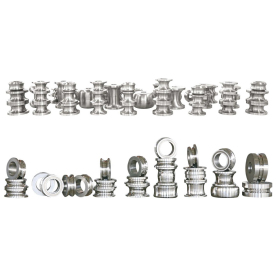Industrial-grade induction heating equipment is a key component in many manufacturing processes due to its ability to provide rapid and consistent heating to a wide range of materials. These devices use electromagnetic induction to heat up a metal object to the desired temperature, making them ideal for applications such as brazing, soldering, heat treating, and annealing.
One of the main advantages of using industrial-grade induction heating equipment is its efficiency. Unlike traditional heating methods that rely on conduction or convection, induction heating directly heats the metal object, resulting in quicker and more uniform heating. This not only helps to reduce processing times but also minimizes energy consumption, ultimately leading to cost savings for manufacturers.
In addition to efficiency, industrial-grade induction heating equipment also offers precise temperature control. By adjusting the frequency and power output of the induction heating system, manufacturers can achieve precise heating profiles tailored to their specific applications. This level of control is especially important for industries where temperature uniformity is critical, such as in aerospace and automotive manufacturing.
Moreover, industrial-grade induction heating equipment is highly versatile and can be used for a wide variety of materials, including steel, aluminum, copper, and titanium. This versatility allows manufacturers to use a single heating system for multiple applications, reducing the need for multiple heating sources and simplifying the production process.
Another benefit of industrial-grade induction heating equipment is its safety. Since induction heating does not rely on open flames or hot surfaces, the risk of accidents and injuries is significantly reduced. This is particularly important in industries where worker safety is a top priority, such as in the oil and gas, chemical, and pharmaceutical sectors.

Maximize Efficiency and Precision with Industrial-Grade Induction Heating Equipment

Maximize Efficiency and Precision with Industrial-Grade Induction Heating Equipment
Despite its numerous advantages, industrial-grade induction heating equipment does require proper maintenance and regular calibration to ensure optimal performance. This includes checking and replacing worn-out components, monitoring power output levels, and calibrating temperature sensors to maintain accuracy.

Maximize Efficiency and Precision with Industrial-Grade Induction Heating Equipment
In conclusion, industrial-grade induction heating equipment is a valuable tool for manufacturers looking to maximize efficiency and precision in their production processes. With its fast heating speeds, precise temperature control, versatility, and safety features, induction heating is an essential technology for a wide range of industries. By investing in high-quality induction heating equipment and implementing proper maintenance procedures, manufacturers can achieve greater productivity, quality, and cost savings in their operations.Cold Cutting Saw Machine Replacement Parts




